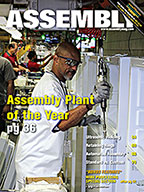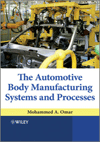Ventilator Production Surges at Medtronic

MINNEAPOLIS—To address the global COVID-19 pandemic, Medtronic Inc. has boosted ventilator production at its factories. The company has increased production by more than 40 percent and is on track to more than double its capacity to manufacture ventilators.
“High-performance ventilators play a critical role in the management of patients with severe respiratory illness, such as COVID-19, who require assistance because they cannot breathe effectively,” says Bob White, executive vice president and president of the minimally invasive therapies group at Medtronic.
“By placing a patient on such a ventilator, the patient’s lungs are permitted to rest and recover while the ventilator performs the functions of supplying oxygen and simulating the actions of breathing,” explains White. “Without ventilation support, some patients with severe respiratory disease might not survive.”
Medtronic produces ventilators for a variety of care settings, including the acute segment (in-hospital patients in intensive care units, emergency departments or on general care floors) and the sub-acute segment (out of hospital, long-term care facilities or home-ventilated patients). Medtronic manufactures the Puritan Bennett 980 and Puritan Bennett 840 ventilators at a state-of-the-art plant in Galway, Ireland. The products are designed for critically ill patients in high acuity settings.
“Ventilator manufacturing is a complex process that relies on a skilled workforce, a global supply chain and a rigorous regulatory regime to ensure patient safety,” claims White. “In recent weeks, [we have] identified additional opportunities to further increase [our] ventilator manufacturing capacity.”
According to White, the company expects to quickly ramp up its manufacturing capacity for ventilators. Medtronic currently employs more than 250 assemblers at its Irish factory. It plans to more than double that number, including transferring staff from other Medtronic sites to support production activities.
“Additional manufacturing shifts have been put in place and new manufacturing shift patterns are being introduced to bring the plant to 24/7 operation,” says White.
Looking for a reprint of this article?
From high-res PDFs to custom plaques, order your copy today!







